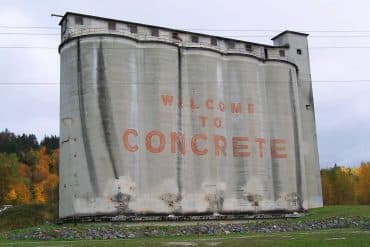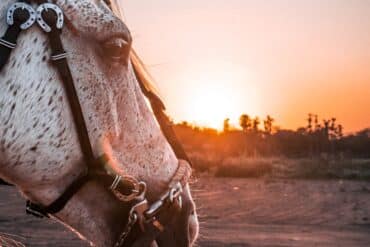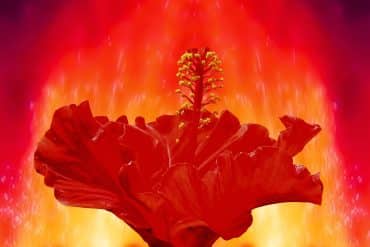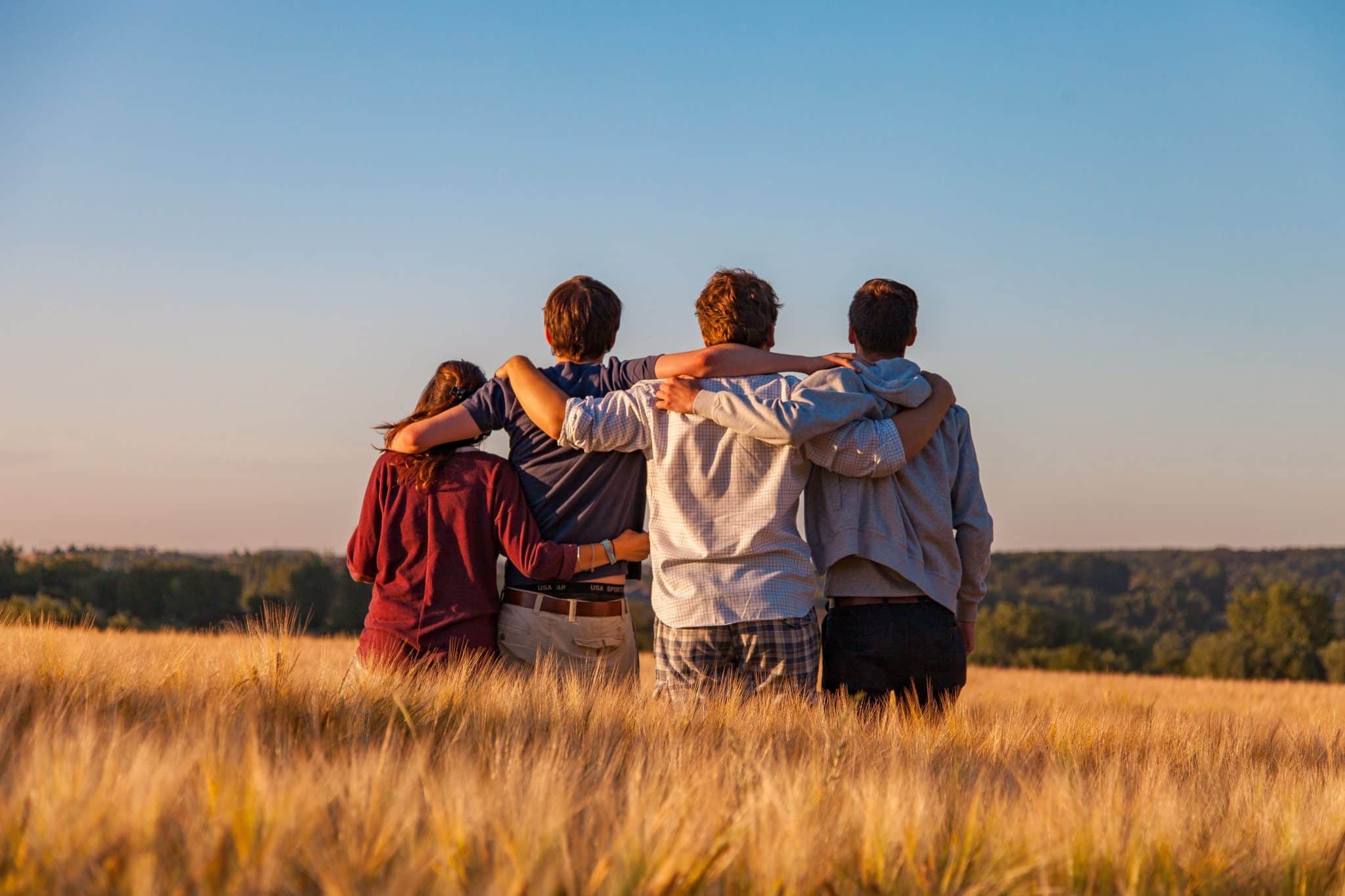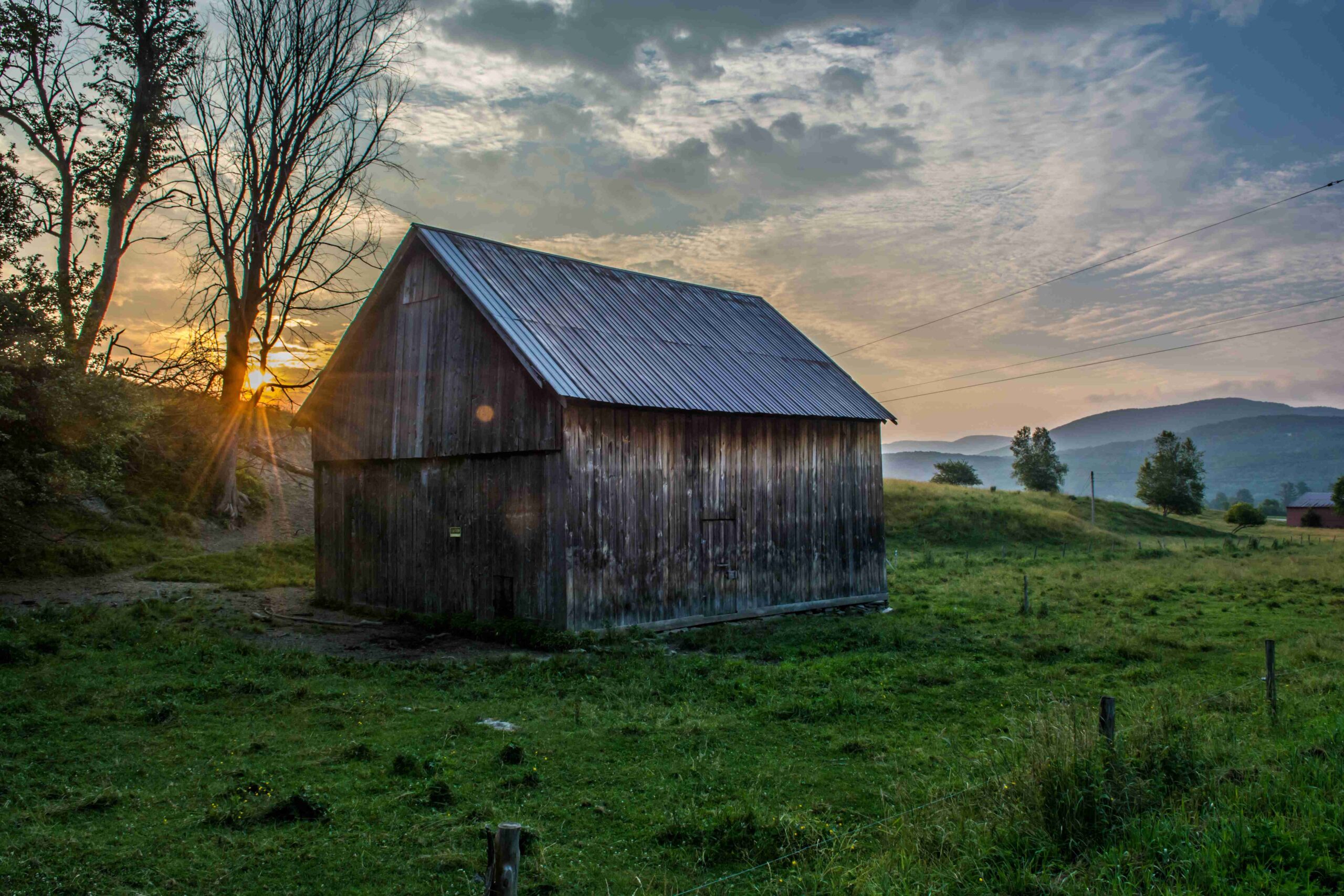Hiding Something Nefarious, Sadness, Danger and the Shed
Author’s Memo
My initial forays into ethnographic and autoethnographic methods revolved around religious organizations, activities, events, and communities. No matter the religious traditions or other demographic contents in such studies, each one seemed to carry mundane, worldly, sets of stories and beliefs that danced between members over the passage of time. Some of these stories involved bad things that had happened in their areas. Some of these stories involved people who had “made good” or otherwise done better than expected in some way. Some of these stories involved the departure and return to the organization, community, or tradition of this or that person, family, or soul. Each of these stories carried lessons at least as clear and important as any of the lessons taught during official worship services.
One of the most common stories I came across involved the possibility of a person – almost always a man – hiding a deep, dark secret that only came out (1) after the person had left the community or region in some kind of disgrace; (2) after the community or group learned about crimes that occurred in their area; and/or (3) after some people – almost always a kid or kids – or property disappeared or was harmed in some way. The stories tended to have common components including a shared space everyone in the religious group knew about or went regularly; someone who seems like a nice guy and part of the community who is ultimately hiding something nefarious; and a sense of danger or sadness that arose when the community learned the truth about the person and/or place in question.
‘My initial forays into ethnographic and autoethnographic methods revolved around religious organizations, activities, events, and communities.
I wrote this as an illustration of this type of narrative.
Specifically, I utilize the elements of these stories I saw repeatedly during autoethnographic and ethnographic research in varied types of religious organizations during my undergraduate and graduate studies. I also draw upon discussions with students about what (if any) purposes these types of stories and narratives might serve in varied types of communities over the course of time as well as the many similar types of stories students share from their own experiences in religious traditions, secular clubs, and/or online communities. I thus share this short story as an attempt to encourage any reader to think about the stories that circulate within communities as well as the purposes such stories may serve for a given population.

Hiding Something Nefarious, Sadness, Danger and the Shed
The Woods were louder than silence should be.
That is what I remember most about that night.
The Woods were normally a form of symphony, a natural concert highlighting birds, bugs, and the cracking appendages of plants. The sound was never overwhelming, necessarily, but it was there, it was present. It was almost like the musicians took the night off. It was as if they chose not to provide witness to our folly.
Maybe that should have been a sign.
We were on the edge of The Woods, just beyond our neighborhood, nowhere near the river at the end of the opposite wooded expanse.
There were few cars passing by on Medium Road. We were on a walkway that was once the only concrete path for walkers in the area. This was before the abandoned railroad tracks in the middle of The Woods were renovated, before that site became home to clean sneakers and strollers. When I was a kid, you only went into The Woods looking for trouble, or to be alone, or maybe by accident. The good folk went to Jaunt Park, to the long, semi-circular asphalt path we stood upon that night. By the time I was an adult, The Woods were cast in this role, reduced to scenery for joggers from all over town. The walkway we were on that night remains, but its use has decreased. It still surrounds Jaunt Park.
‘The Woods were normally a form of symphony, a natural concert highlighting birds, bugs, and the cracking appendages of plants.
We were in the part of that circular walkway beside our neighborhood.
Hinder Hills, our neighborhood, contains a wide variety of similar looking single family homes. Almost all of them are brick. It is the kind of neighborhood where all but two houses contain white families. It is a place where almost every family has more than one child. It was developed at the end of Jim Crow, put into place as a refuge for white families fleeing the city across the river. It was quite the scandal when the first Black family moved in while I was in elementary school. It is separated from Mont Mounds by Jaunt Park. Mont Mounds is a similar neighborhood where almost all the houses contain Black families.
The walkway we were on circles the park, but the part of it that ran along the edge of Mont Mounds was not quite as well kept back then. The walkway had four points, or at least that’s how we thought of it when we were kids. There is the entrance with the soccer fields parallel to the gymnasium on the other end of the park. The river stands a couple miles behind the gymnasium. You have to walk through the heart of The Woods to get there. The dirt paths are visible, but not clear. On the sides of the circle, there are other dirt paths that lead into Mont Mounds or Hinder Hills on either side of Jaunt Park. These paths remain, but I don’t know if kids still use them.
‘It is the kind of neighborhood where all but two houses contain white families. It is a place where almost every family has more than one child. It was developed at the end of Jim Crow.
We took the dirt path from Hinder Hills into Jaunt Park.
Where we stood that night, the walkway was composed of a type of asphalt that reminds me of shadows. Even then, the asphalt was cheap and old, sometimes it stained our shoes.
We stood at the bottom of a hill.
We stood on the asphalt.
We stood beneath the moon.
It was way too quiet.
We were there that night because we were curious children. Middle school had a way of encouraging curiosity later recognized as recklessness. We were attempting to visualize things we could not quite grasp from dirty magazines our fathers hid near liquor bottles. My dad preferred Brandy. Kim’s dad was more of a whiskey fella. Marty’s dad was gone. We were on the walkway that night because it was past nine o’clock, an especially late time to be outside, and there were very few people and only the occasional car on Medium Road. As Matthew told Marty and Marty told us, “Night was a time when Jaunt Park was private, but with just enough distractions to keep it interesting.”
We were there that night because we were curious children.
We were there because Matthew invited us.
We were there because we did not possess recognition of the danger.
We were three friends of the casual variety. The kind of friends that emerge from neighboring homes before the ability to drive. The kind of friends that will be split up by highways in later years. There was Kim with her blonde hair swept against her forehead, not long, but not short. She was in eighth grade. Her t-shirts always advertised bands. That night, it was Guns N Roses. We all wanted to go to “Paradise City” back then. Kim’s pants didn’t match, but I can’t remember a night where they did. My other companion was Marty.
There were too many Back to the Future jokes I could tell you about, but I’m sure you’ve heard them all. He was chewing on a toothpick, his Master’s golf tournament hat sitting with the bill just to the right side of center. He wore a shirt that could have been a baseball team uniform. It was a relic from little league that appeared to fit well with his jean shorts.
He met Matthew in the alley behind the ice cream shop on Georgia Avenue.
Maybe that should have been a sign.
But Kim and I met Matthew at church.
Maybe it’s hard to pick out signs.
We were three friends of the casual variety. The kind of friends that emerge from neighboring homes before the ability to drive. The kind of friends that will be split up by highways in later years.
In any case, Marty and Kim call me Waffle. That is not my name. I got it during a pick-up baseball game in front of the neighborhood pool at the end of elementary school. We were playing with them plastic balls and bats because we ran out of tennis balls to hit with aluminum bats. The plastic balls and bats were called wiffle, but I thought Joey said waffle. I might have been distracted by his rat tail and smooth cheeks. I might have just misheard. A kid named Lee turned to me and said, “Hey, Miles, catch,” and I reacted just in time. I caught the ball at the same time a small child asked what it was. I told her it was a “waffle ball.” Lee left our neighborhood after that summer, but the nickname remained.
With a non-verbal signal I cannot explain, we agreed to leave the asphalt walkway.
Marty had instructions.
Kim and I were tagging along.
We began walking up the hill toward a wooded area between the walking track and the baseballs fields. The path itself was large enough for trucks to drive down for the maintenance and other needs of Jaunt Park. We’d all seen them at one time or another. They were white, massive, and adorned with built-in toolboxes. We didn’t quite grasp what they did, but we knew they drove down this hill. One almost hit Joey the summer before that night. There were leaves all over the ground, they made sounds like Rice Krispies submerged in milk. We made our way up the hill like children on the way to the dentist’s office, slow, methodical steps created by equal parts fear and resignation.
‘With a non-verbal signal I cannot explain, we agreed to leave the asphalt walkway.
At least the leaves finally created some sense of sound.
At least Marty finally stopped whining that he was supposed to come alone.
When we reached the top of the hill, we did exactly as Matthew instructed. We moved to the right side where a small building stood alone in the darkness. It was the type of aluminum shed you see in so many backyards. It was rusted, but you got the feeling that it once was blue. We moved to the back of the shed. We looked at the edges of the rusted metal door. We looked at each other. A lonely bird whistled somewhere behind us. We stood outside the shed, where Matthew said he would meet Marty.
“Do you think he’s coming,” Marty asked with a voice advertising regret.
Matthew was a man. That is important, especially as we were only children. Matthew picked up odd jobs from church members and construction crews. He was maybe as old as our fathers, but maybe closer in age to the drunk younger adults that sometimes threw beer bottles on the floor of the picnic pavilion in Jaunt Park. He had a soft voice and deep blue eyes. His brown hair was short, neat, almost, but not quite, like a soldier from the military base across the river. He always wore beat up, faded, button down shirts.
At least the leaves finally created some sense of sound.
These were not the types of shirts that fit well with clip on ties. They were the type you expect to see under a Carhart jacket with stained sleeves. Matthew spent almost as much time in the alley behind the ice cream shop as we did in The Woods, as our parents did at work or at church.
“Sure, he’s coming, but I don’t know, I mean, we don’t have to stay,” I say.
I am trying and failing to hide the tremor in my voice.
Taking a finger with a freshly bitten nail out of her mouth, Kim says, “Are you boys scared, I mean, come on, it’s Matthew?”
Marty met Matthew a few months ago. We had all seen Matthew for years, but him and Marty began to chat behind the ice cream shop on a regular basis. It was Matthew who first let Marty try a cigarette. It was Matthew who gave Marty a sip of beer the same way Kim and I each got our first sips from our parents in moonlit backyards. It was not surprising that Matthew had an idea when Marty mentioned his blooming interest in the box of pornography that once belonged to his dad. Marty was at the ice cream shop almost every day because his mom started picking up shifts there after his daddy went away. We didn’t yet know what “away” meant that night, but I’m sure, like we did, you can guess.
I am trying and failing to hide the tremor in my voice.
“I just don’t know if this is the best idea,” I said at about the same time we heard a loud crunch somewhere to the right of where we were standing.
“Screw that Waffle,” Marty said a second later, “You’re just getting creeped by The Woods, ya’ll wanted to come so bad, just calm down, he’ll be here.”
“Okay, so what now,” Kim asked as another crashing sound chilled my spine.
I will never know what these sounds were. They could have been the usual noises that permeate The Woods and Jaunt Park at night. That would not be surprising. I would guess that the eerie quiet just made me jumpier, more susceptible to shadows. They could have come from any of the monsters kids swore lived in The Woods. These beings were said to come out at night. We were led to believe they were the source of the occasional disappearances over the years. To my knowledge, their existence was never confirmed. The crashing sounds could have been created by the police force spreading out in Jaunt Park that night. We would learn about this later from the local news. We would see footage captured by some reporter near the picnic pavilion. I will never know what crashed in the night, but I think I will always wonder.
‘Okay, so what now,” Kim asked as another crashing sound chilled my spine.
“We go in the shed, there should be a latch, that’s what Matthew said.”
“You want to go inside that nasty thing,” I asked before I could stop myself.
“Oh, come on,” Kim croaked, “Where’s your sense of adventure?”
Marty found the latch, and we opened the rusted shed door.
I don’t know if anyone other than Matthew would have been able to get us to that shed. He was the kind of guy that almost every small town seems to possess. He was always so nice to Kim and me when we saw him at church. He always had an extra snack and a funny story. Marty never came to our church. He went to what my mom called the “heathen” church across the street. Heathen, in this context, meant Methodist. But Marty had similar experiences with Matthew behind the ice cream shop. Matthew lived in a small, baby blue house halfway between our church and the ice cream shop. His parents ran the local gas station. I think he even worked there at some point, but I’m not sure. It was not the kind of thing I could ask about after that night.
‘These details felt different after that night.
Matthew spent a lot of time with Marty behind the ice cream shop. Marty missed his father. Matthew slid into that space. He would give Marty a dollar for a soda on some days, and he would listen to Marty’s schoolboy drama on other days. He often felt like the best of adulthood, like he cared more than the other grownups.
These details felt different after that night.
“This ain’t right,” Kim said staring into the shed.
It was a small space, the kind where you expect to see weed whackers, bags of topsoil, and other yardwork paraphernalia. Instead, we saw a pallet on the floor, a kind of mattress and sleeping bag combination that looked like something from a long forgotten campsite. There was a lantern, the gas kind that doesn’t require wall outlets, on the right side of the pallet. There were comic books and toys on the left side. A Mr. Potato Head stared at us from the gloom. There was a boombox, the smaller ones they sold at K Mart, sitting in the corner surrounded by a pile of tapes and paperback books. The teddy bear on the pallet looked like it might cry.
“I’m going home,” I said.
Kim nodded.
Shaking, Marty said, “No, not yet, let’s wait a minute, I’m sure it’s no big deal, probably just like a kind of hangout, like the ones we built in The Woods.”
“Adults don’t build tree houses and such,” Kim said turning away from the shed.
‘It felt longer.
It was too quiet.
It was loud inside my head.
She began to walk down the hill. I followed her. Marty was still standing by the shed. We stopped a few feet away. We couldn’t leave him there. Kim asked if I had the Buck knife my dad gave me for my ninth birthday. I nodded, pulled out the knife, and opened it. We sat on the path, watching Marty, scanning the woods around us, waiting. Kim started drawing in the leaves and dirt with a twig pulled off a small bush. Marty was pacing by the shed. We told him we needed to go home. He kept shaking his head. This went on for a long time.
Kim always said we waited there for over an hour.
It felt longer.
It was too quiet.
It was loud inside my head.
‘The next morning, we watched the local news.
We heard the first sirens as we started up the winding curve of Medium Road after exiting the dirt path between the walking track and Hinder Hills. The too quiet night erupted. We saw lights emerge, first one, then more, on the porches of the similar-looking brick houses. We walked toward our respective homes. We watched a few people step out onto their porches, as if they might be able to see the police cars. We dropped Marty at his house two blocks from our own. He was still shaking. He hadn’t said a word since we finally left the shed. He wouldn’t say much for a few days to come. I never heard him say what he was thinking that night, but I have a few ideas. His parents were awake. They were not pleased.
The next morning, we watched the local news.
The anchors were shocked by the manhunt for Matthew Andrew Rollinson. There were vague statements about what he might have done. There were ongoing discussions about where he might be found. I counted seven utterances of what a nice guy he was. We watched the coverage for the three weeks before the news accepted that he was gone. We listened in the hallways of the school as other students sought to determine if anyone had known him well. There were other codes for what we were really asking, but they all shared an unspoken agreement to avoid details. Kim, Marty, and I were quiet.
We did not mention that night in The Woods.
We did not mention the shed.
Credits
Photo of a forest by Olena Bohovyk for Unsplash
Featured image of a shed by Kevin Jarrett for Unsplash
Learn More
New to autoethnography? Visit What Is Autoethnography? How Can I Learn More? to learn about autoethnographic writing and expressive arts. Interested in contributing? Then, view our editorial board’s What Do Editors Look for When Reviewing Evocative Autoethnographic Work?. Accordingly, check out our Submissions page. View Our Team in order to learn about our editorial board. Please see our Work with Us page to learn about volunteering at The AutoEthnographer. Visit Scholarships to learn about our annual student scholarship competition.
J.E. Sumerau (she/they) is a social psychologist and the director of applied sociology at the University of Tampa. They are also the author of 6 novels published with academic presses, and two of these novels, Homecoming Queens and Palmetto Rose, were finalists for the lambda literary awards in 2018 and 2019 respectively. The winner of the 2021 George Garrett Prize in Fiction, Sumerau has also published short stories in The Hearth and Coffin, Sandhills Literary Magazine, The So Fi Zine, and The Sociological Review. For more information, please visit www.jsumerau.com.



